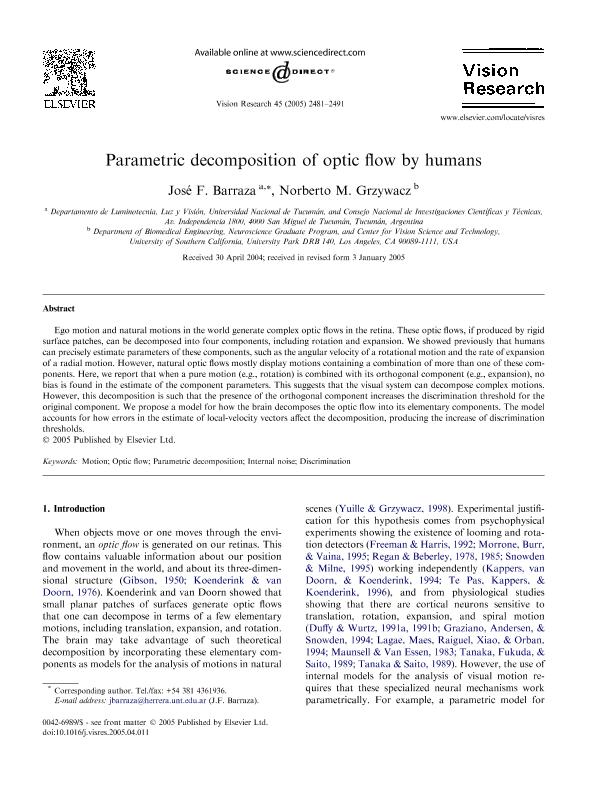Artículo
Parametric decomposition of optic flow by humans
Fecha de publicación:
09/2005
Editorial:
Pergamon-Elsevier Science Ltd
Revista:
Vision Research
ISSN:
0042-6989
e-ISSN:
1878-5646
Idioma:
Inglés
Tipo de recurso:
Artículo publicado
Clasificación temática:
Resumen
Ego motion and natural motions in the world generate complex optic flows in the retina. These optic flows, if produced by rigid surface patches, can be decomposed into four components, including rotation and expansion. We showed previously that humans can precisely estimate parameters of these components, such as the angular velocity of a rotational motion and the rate of expansion of a radial motion. However, natural optic flows mostly display motions containing a combination of more than one of these components. Here, we report that when a pure motion (e.g., rotation) is combined with its orthogonal component (e.g., expansion), no bias is found in the estimate of the component parameters. This suggests that the visual system can decompose complex motions. However, this decomposition is such that the presence of the orthogonal component increases the discrimination threshold for the original component. We propose a model for how the brain decomposes the optic flow into its elementary components. The model accounts for how errors in the estimate of local-velocity vectors affect the decomposition, producing the increase of discrimination thresholds.
Palabras clave:
MOTION
,
OPTIC FLOW
,
PARAMETRIC DECOMPOSITION
,
INTERNAL NOISE
,
DISCRIMINATION
Archivos asociados
Licencia
Identificadores
Colecciones
Articulos(ILAV)
Articulos de INST.DE INVESTIGACION EN LUZ, AMBIENTE Y VISION
Articulos de INST.DE INVESTIGACION EN LUZ, AMBIENTE Y VISION
Citación
Barraza, Jose Fernando; Grzywacz, Norberto M.; Parametric decomposition of optic flow by humans; Pergamon-Elsevier Science Ltd; Vision Research; 45; 19; 9-2005; 2481-2491
Compartir
Altmétricas




